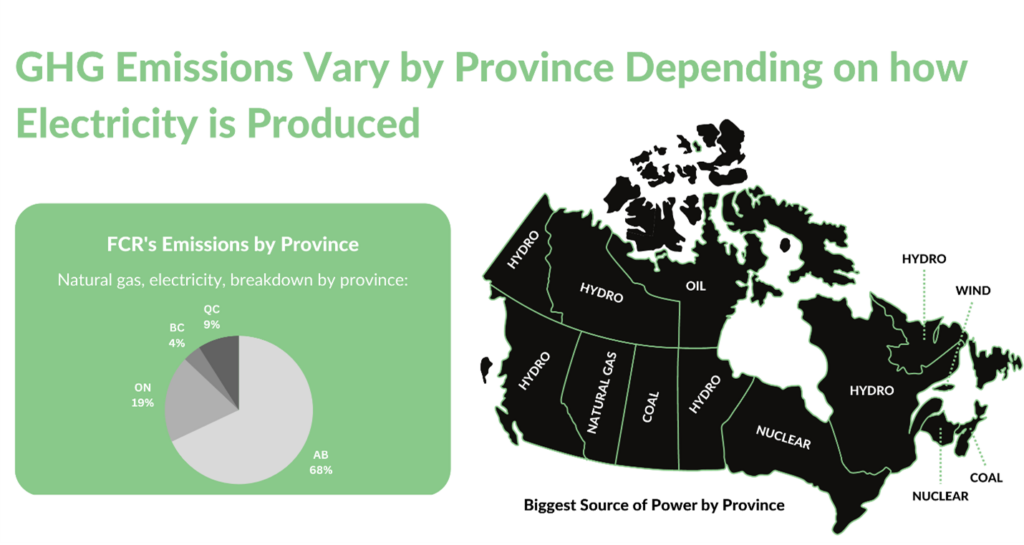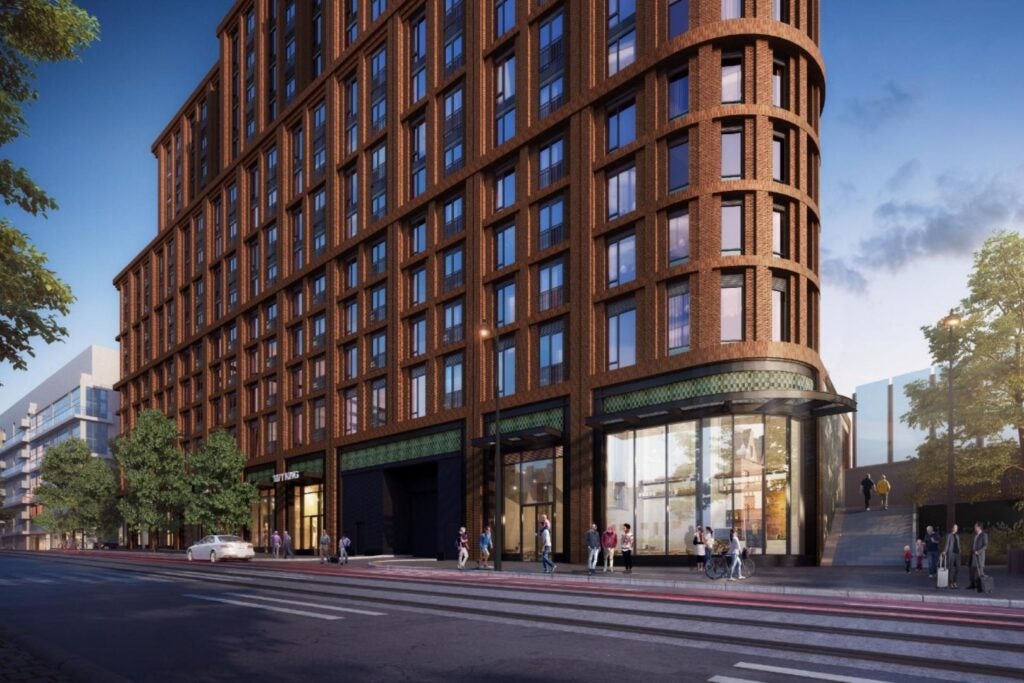Welcome back to First Capital’s Climate Action Video and Blog Series. In the second installment of this four-part series, we’ll be discussing energy consumption as it is one of the largest contributors to climate change. Luckily, there are ways we can conserve it.
We’ll be exploring the concept of energy conservation, what we’re doing to help, and providing practical tips for individuals and businesses to reduce their energy consumption. Together, we can transition to cleaner, more sustainable sources of energy. Join us on this journey to a more sustainable future.
Every day, we consume energy to power our homes, businesses, and lives. From enjoying your morning coffee, charging your cellphone battery, warming and cooling your home, to binge watching your favourite TV show, we’re constantly consuming energy. But have you ever stopped to think about where that energy comes from, and how it impacts our planet?
Fossil fuels, a non-renewable energy source, are the second largest source for electricity production in Canada – we rely on them very heavily. It is created through the extraction and burning of hydrocarbon-containing materials that are naturally formed in the Earth’s crust such as coal, oil, and natural gas. The process of burning fossil fuels to generate energy (most commonly for electricity and transportation) emits harmful greenhouse gas (GHG) pollutants into the atmosphere. Further to which, the extraction, transportation, and burning of fossil fuels can lead to water and air pollution, habitat destruction, and other environmental issues. Did you know that burning fossil fuels is one of the leading causes of climate change?
Today, residential, commercial, and institutional buildings contribute to 17% of Canada’s GHG emissions. These emissions come from the electricity used to heat and cool our buildings, as well as to power them and all the appliances inside. Additionally, when we consider building materials and construction, the number jumps from 17% to 30%, making the building sector Canada’s third-highest carbon emitter.
The truth is, our reliance on fossil fuels and other non-renewable energy sources is taking a toll on the environment, contributing to climate change and other harmful environmental issues. The good news is that there are things we can do to make a difference – and that starts with energy conservation.

What is energy conservation?
Energy conservation is the practice of reducing the amount of energy used while still achieving the same outcome. In other words, it’s about doing more with less. Don’t worry, you don’t have to stop your morning coffee routine; we just have to find ways to make it more efficient.
Both businesses and individuals have an important role to play in energy conservation. For businesses, energy conservation can reduce operational costs and help with sustainability efforts. For individuals, energy conservation can save money on monthly bills and reduce their carbon footprint. Even better, making your home more energy efficient will likely increase its value.
So, what can you do at home to conserve energy? Here are three simple things:
- Switching to energy-efficient light bulbs: these light bulbs (i.e., LEDs) use up to 80% less energy than traditional bulbs and last up to 25 times longer. This is an easy upgrade with a huge benefit.
- Draft proofing & installing weatherstrips: Adding weatherstrips around doors and draft proofing windows can keep warm and cool air inside your house. By doing so, it reduces your energy consumed to heat and cool your home, which also results in lower energy bills and overall comfort in your home. This reduces the impact on your HVAC equipment and preserves its longevity.
- Upgrading to energy-efficient appliances: When replacing old appliances, consider upgrading to energy-efficient models. Look for appliances with the ENERGY STAR label, which are certified to use less energy than standard models. These energy-efficient appliances will reduce the energy required by 10% to 50% and can save you 20% to 50% on your monthly energy bills.
For those who own businesses or want to reduce energy consumption in their workplace, here are a few great ways to do so:
- Conduct an energy audit: This involves analyzing energy use in the workplace and identifying areas where energy can be saved. An energy audit can help businesses determine which systems and processes are using the most energy and where improvements can be made. This is a great starting point to conserve energy.
- Use energy-efficient equipment: Businesses can reduce their energy consumption by using energy-efficient office equipment such as printers, computers, and copiers. Additionally, switching to energy-efficient heating, ventilation, and air conditioning (HVAC) systems can result in significant energy savings and provide cleaner and better air quality.
- Encourage employee participation: Businesses can promote energy conservation by educating employees on ways to save energy. This can include turning off lights and equipment when not in use and using natural lighting and ventilation when possible. This spring, we’re launching our Green from Home initiative that will encourage our staff to do their part as well.
How can we introduce clean and renewable energy in our daily lives?
Clean energy comes from systems that produce energy without emitting any pollutants. Systems like solar, wind, geothermal and hydropower are all examples of clean energy that substantially reduce GHG emissions and help eliminate the need for fossil fuels.
Businesses and homes are continuing to implement clean energy systems to help combat GHG emissions and reduce energy costs. For example, at First Capital, we are implementing geothermal technology into some of our newest developments. Geothermal energy is a type of renewable energy that takes the heat from the earth’s core and uses it to heat and cool buildings. Not only does it have a very long lifecycle, but it can be harvested and used for everyday energy consumption and provides healthy indoor air, eliminating the use and combustion of fossil fuels all together.

At First Capital, we recognize the impact our properties have on the environment and are committed to improving our sustainable efforts until we achieve net-zero by 2050. As leaders in the commercial real estate industry, we believe it is our responsibility to drive sustainability efforts and are committed to doing our part. We’ve taken steps towards reducing our energy consumption at our properties, including our portfolio-wide LED parking lot lighting retrofit. While this was significant, we understand that there is more work to be done and are in the middle of conducting energy-audits at every single one of our properties to identify where we can conserve energy.
Energy conservation is everyone’s responsibility. By taking simple steps at home and work, we can help protect the environment, reduce our carbon footprint, and save money.
Visit our Environmental, Social, and Governance (ESG) page for more information on how we’re taking action to combat climate change – click here.
Missed the first installment of the Climate Action Video and Blog Series? Check it out here.


